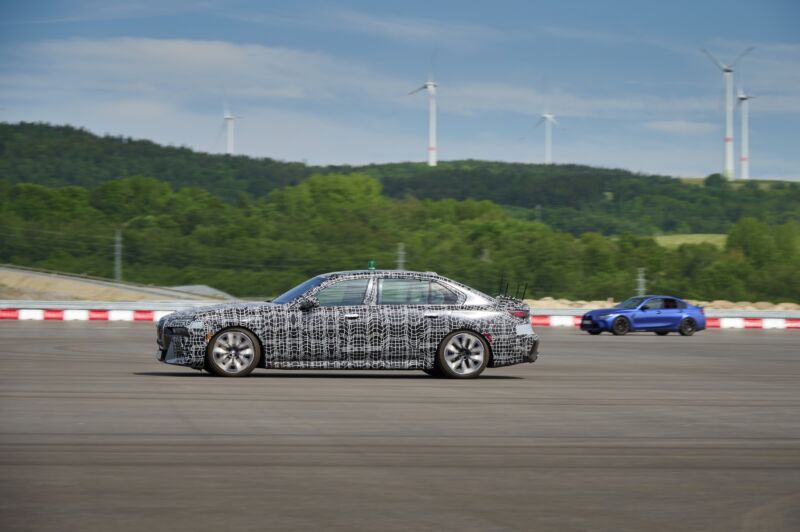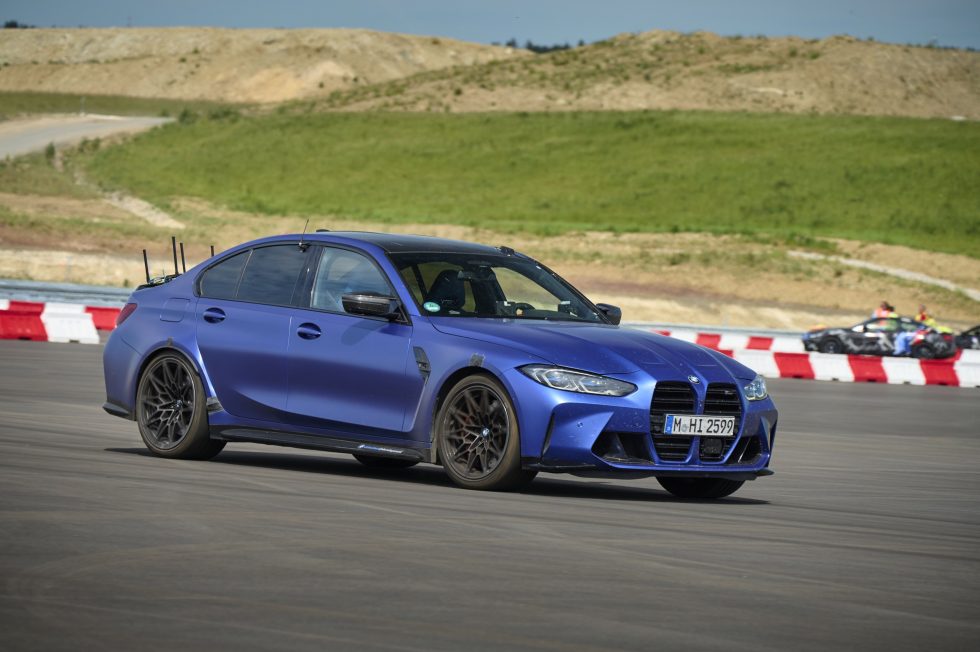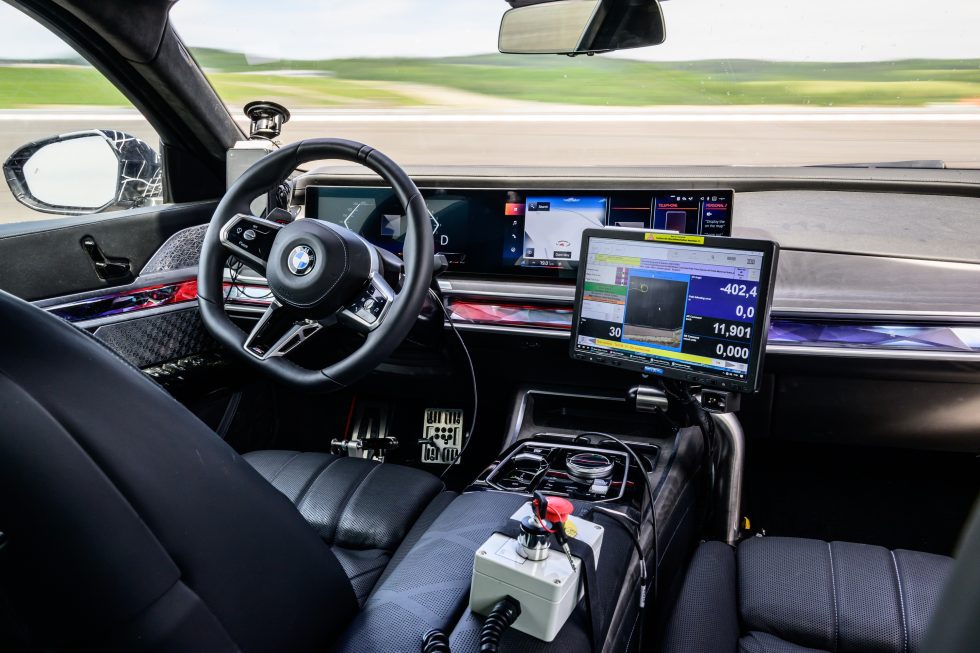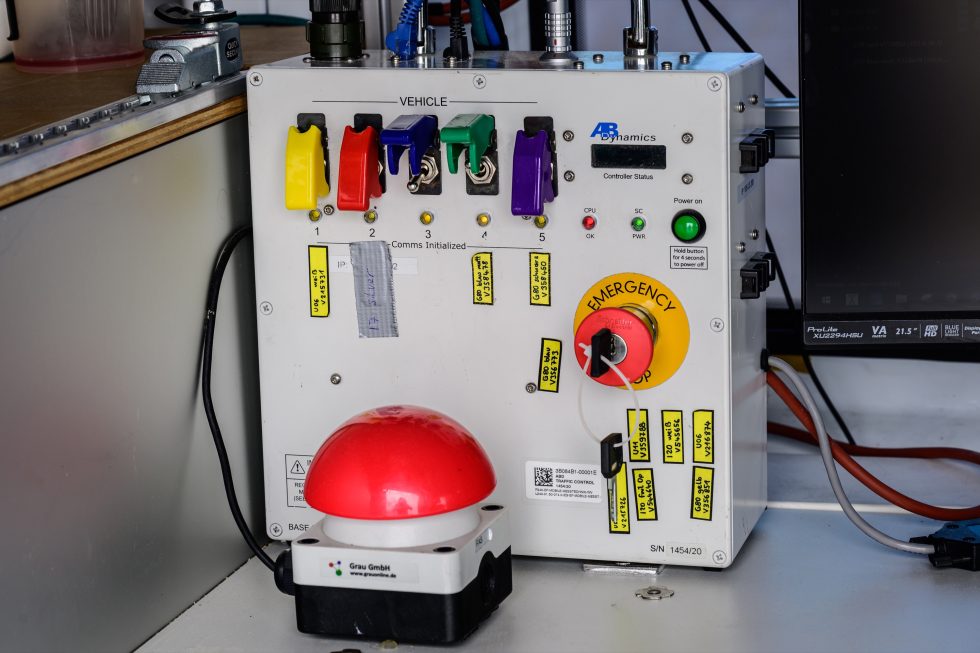
Enlarge / Neither of these test BMWs has a human in the driver’s seat.
BMW
On a large empty slab of asphalt, two BMWs take off. They drive in figure eights and along an oval path separate from each other but nearly in tandem, like two ice skaters practicing the same routine on a piece of black ice before coming to a stop.
Neither of the cars has a driver. That’s not that impressive; self-driving cars in testing environments shouldn’t impress anyone at this point. Essentially the automaker tells the car to drive a route, and it does it. The important thing here is why these cars, outfitted with additional sensors, are driving along the same route again and again, each time depressing the accelerator the same amount and applying the exact amount of pressure on the brakes: They’re testing hardware with the least amount of variables you can encounter outside of a lab.

Enlarge / A closer look at one of the instrumented BMWs.
BMW
“It’s boring for human drivers,” says BMW’s project lead for driverless development, Philipp Ludwig. When a human is asked to perform the exact same task repeatedly, the quality of the work diminishes as they lose interest or become fatigued. For a computer-controlled car, it can do this all day. And it has done exactly that.
According to Ludwig, the vehicles have performed roughly 43,500 miles (70,000 km) of driving tests over the past few years. These are high-speed autobahn maneuvers—testing can occur at speeds up to 122 mph (200 km/h). These are traffic tests, stop light tests, and quite a lot of brake tests.
The vehicles do all this physically in a testing area at BMW’s Sokolov testing facility in the Czech Republic, but also virtually on tracks, on highways, and on city streets. It’s a landscape of virtual items; so if something does go wrong and a car “hits” something, it hasn’t actually hit anything.

Enlarge / Not your average i7 interior.
BMW
Using these driverless vehicles for testing garners BMW accurate data about things like brakes. The car will travel the exact same speed and depress the exact amount of pressure on the brake again and again thanks to drive-by-wire technology—something a human couldn’t do. That data on distance traveled is more accurate, and the automaker has microphones and temperature gauges to detect brake squeak and pad and rotor temperature.
That data is beamed instantly to a nearby control center van and back to BMW HQ in Munich, Germany, all over LTE. The only real variables are weather, tire wear, and asphalt temperature. To make sure the brake tests are consistent, the vehicles move slightly over between tests so as to not be hindered or helped by any rubber left on the road.

Enlarge / BMW’s engineers can run multiple cars at once.
BMW
Too hard to do with people
Ludwig noted that that sort of reproducibility with humans was difficult to attain. It also required one person per car. “The thing is, it’s not that you do it 10 times or 10 days; you have to do 10,000 times. So we need more drivers in more cars,” Ludwig said. If the weather was bad, you now had five people with five cars standing around. With the current system, a single person can control five different cars at once, all of them testing various items. And the engineers don’t even see the vehicles 80 to 90 percent of the time; they just see it on the computer.
Before the current drive-by-wire system, BMW engineers would have to install mechanical robots in the vehicles that steered, shifted gears, and braked. It was a tedious setup that took days. Now BMW says it can set up and calibrate any current BMW with the system in about one day.
>>> Read full article>>>
Copyright for syndicated content belongs to the linked Source : Ars Technica – https://arstechnica.com/?p=1956358































